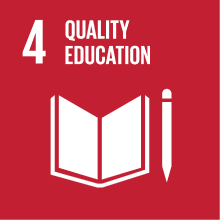HISPANIC AMERICAN LANGUAGE AND TRANSLATION
- Academic year
- 2025/2026 Syllabus of previous years
- Official course title
- LENGUA HISPANOAMERICANA Y TRADUCCIÓN
- Course code
- LMI04Q (AF:582599 AR:323080)
- Teaching language
- Spagnolo
- Modality
- On campus classes
- ECTS credits
- 12
- Degree level
- Master's Degree Programme (DM270)
- Academic Discipline
- L-LIN/06
- Period
- 2nd Semester
- Course year
- 1
- Where
- VENEZIA
- Moodle
- Go to Moodle page
Contribution of the course to the overall degree programme goals
Expected learning outcomes
- Specialized terminology for the study of linguistic variation in Spanish
- Diatopic variation in Spanish.
- Diaphasic variation in Spanish.
- Spanish for accademic purposes. C1+/C2 level.
2.2 Applying knowledge and understanding
- Be able to use specialized linguistic terminology in all processes involving the application and communication of acquired knowledge;
- Be able to recognize and analyze the variation phenomena in the Spanish language;
- Be able to use academic corpora and open-access electronic resources to improve the understanding of variation phenomena and to carry out small research projects;
- Be able to apply the theoretical knowledge and metalinguistic skills acquired to monitor one's own learning and language acquisition process, as well as to refine one's Spanish-language production in academic communication contexts at the C1+ level.
2.3. Making judgments
- Be able to appreciate the polycentric nature of the linguistic norm of Spanish and the variationist approach proposed by the Nueva Gramática de la lengua española (2009);
- Be able to appreciate the role of social consensus in the creation and maintenance of linguistic norms;
- Be able to appreciate the cultural dimension of communication;
- Be able to appreciate the value of clear language in academic communication.
2.4. Communication skills
Be able to understand, communicate and discuss the theoretical topics and issues addressed throughout the course, using appropriate terminology and demonstrating linguistic accuracy and appropriateness in Spanish academic communication at a C1+ level.
2.5. Lifelong learning skills
Abilty to integrate lecture notes with the reference texts.
Ability to consult and utilize corpora and bibliographic resources relevant to study and research.
Pre-requirements
Contents
- Spanish: a global language, a global history
- Linguistic variation and varieties
- Diatopic variation: European and American geographical varieties;
- Diaphasic variation: the colloquial register;
- Diaphasic variation: specialized languages, academic discourse.
Coursework:
Linguistic Training to develop proficiency in academic writing in Spanish at C1+/C2.
- Grammar activities at the C1+ level, including contrastive analysis with Italian, through multiple-choice tests, gap-filling exercises, and pedagogical translation tasks;
- Preparation for listening to and understanding specialized audio-visual and digital texts;
- Preparation for reading and understanding the referral texts;
- Preparation for written and oral academic presentations.
Referral texts
Escandell Vidal (2011): “El lenguaje y las lenguas”, en Invitación a la lingüística, Madrid: Editorial Universitaria Ramón Areces. Cap. 1.
Escandell Vidal (2011): “Variación y cambio lingüístico”, en El lenguaje humano, Madrid: Editorial Universitaria Ramón Areces. Cap. 8.
Moreno Fernández, Francisco (2020). Variedades de la lengua española, New York: Routledge
Supplementary readings
Aleza Izquierdo, Milagros e Enguita Utrilla, José María (2010): La lengua española en America: normas y usos actuales. Valencia: Universidad de Valencia.
Bosque, I. (1999): Lengua castellana y literatura II, Madrid: Akal. Las Variedades de la lengua 1, 2, 3, 4.
Briz, Antonio (1998): El español coloquial en la conversación, Barcelona: Ariel Lingüística.
Hugalde, José Ignacio et al. (coord.) (2001): Introducción a la lingüística hispánica, New York: Cambridge University Press
Moreno Fernández, Francisco (2001). Las variedades de la lengua española y su enseñanza, Madrid, Arco/Libros.
Calvi, Maria Vittoria, Bordonaba Zabala, Cristina, Mapelli, Giovanna, Javier Santos (2009): Las lenguas de especialidad en español, Roma: Carocci.
Digital resources
CVC: Diccionario de términos clave de ELE, en línea: https://cvc.cervantes.es/Ensenanza/biblioteca_ele/diccio_ele/default.htm
COSER: Corpus oral y sonoro del español rural: http://www.corpusrural.es/
ALPI: Atlas Lingüístico de la Península Ibérica: http://cchs.alpi.csic.es/
AsinES: Atlas sintáctico del Español: http://asines.org/
Ulteriore materiale bibliografico sarà fornito durante il corso e reso disponible sulla piattaforma moodle d’Ateneo.
Language training
VV.AA, El Ventilador. Curso de español de nivel superior, Madrid, Difusión.
Assessment methods
The final oral examination, lasting 15 minutes, requires the student to present a topic covered during lectures and in specialised texts, followed by an interaction with the instructor on the course content. The exam aims to assess the student’s metalinguistic competence with respect to the module content, accuracy in the use of specialised terminology, critical thinking and research skills, as well as linguistic accuracy and appropriateness in academic Spanish.
The assessment of linguistic and communicative competences takes place over the course of the academic year and is divided into two sessions, scheduled in January and May, prior to the final examination with the instructor, according to a timetable communicated at the beginning of the first semester.
The communicative profile resulting from the assessment contributes to the overall average together with the module examination grade and is weighted appropriately in the final mark. All detailed information is available from September onwards on the Moodle pages of the instructor and the language tutors. For specific requests or further information, please contact the instructor.
Students holding a DELE certificate of C2 level are not required to take the part 2 (language training) on the conditions that i) the date on which the certificate was obtained is at the latest two years prior to the date of the exam ii) they provide the lecturer with a paper or electronic copy (both sides) of the certificate. No other certificates shall be accepted.
Type of exam
Grading scale
- Score between 18 and 24: The student demonstrates sufficient knowledge of the course content, a basic understanding of specialized terminology, and an adequate level of academic communication in both written and oral Spanish.
- Score between 25 and 28: The student shows a good grasp of the course topics, solid critical thinking skills, and a good command of academic communication in Spanish.
- Score between 29 and 30: The student displays excellent knowledge of the course content, fluent exposition, outstanding critical analysis, advanced use of specialized vocabulary, and a high level of proficiency in academic communication in Spanish.
Honors (cum laude) may be awarded to students who exhibit exceptional performance across all criteria, including deep subject knowledge, strong analytical thinking, and superior communication skills.
Teaching methods
Moodle
Linguistic training: practical exercising of reading, writing, oral presentation, oral interaction, and translation at a C1+/C2 level.
Further information
2030 Agenda for Sustainable Development Goals
This subject deals with topics related to the macro-area "Human capital, health, education" and contributes to the achievement of one or more goals of U. N. Agenda for Sustainable Development


